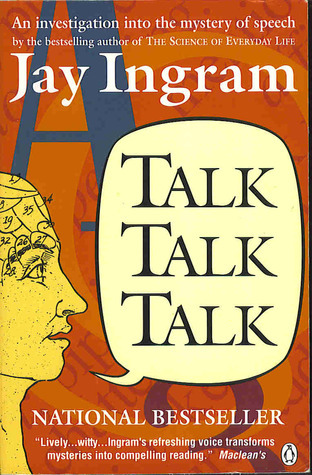
Talk, Talk, Talk: An Investigation into the Mystery of Speech
Book Description
What if the key to understanding humanity lies in the words we speak? Dive into 'Talk, Talk, Talk: An Investigation into the Mystery of Speech' and unravel the captivating enigma of communication. Journey through the evolution of language, explore the psychology behind conversation, and discover how speech shapes societies and relationships. Each page crackles with fascinating insights and vivid illustrations of how sound connects us, or tears us apart. As layers of meaning unfold, the question looms: What secrets of the human experience are locked within our conversations waiting to be uncovered?
Quick Book Summary
"Talk, Talk, Talk: An Investigation into the Mystery of Speech" by Jay Ingram is a compelling exploration into the science, history, and psychology of human language. The book delves into the origins of spoken word, tracing how our species developed the unique ability to communicate through speech. Ingram combines vivid anecdotes, scientific insights, and engaging questions about why and how we talk, making linguistic concepts accessible to general readers. From the evolution of language to its role in shaping societies, the book uncovers how conversation influences our daily lives, relationships, and even our sense of self. By unraveling the complex interplay between biology, culture, and thought, Ingram offers a fascinating window into what it truly means to be human through the act of speaking.
Summary of Key Ideas
Table of Contents
The Evolutionary Roots of Human Speech
Talk, Talk, Talk opens by venturing into humanity’s deep past to investigate the evolutionary roots of speech. Ingram discusses how, unlike any other species, humans developed complex vocal communication. By examining anthropological evidence, the book assesses how anatomical changes in the vocal tract and brain enabled the leap from gestures and primal noises to spoken language. This section illustrates how, millennia ago, the need for coordinated group action and the sharing of knowledge likely provided the impetus for the emergence of speech as a defining human trait.
The Psychology of Conversation
The narrative then transitions into the psychology underlying conversation. Ingram explores cognitive processes such as language acquisition in children and how our brains turn thoughts into words almost effortlessly. He also tackles the subtlety of conversational cues—such as tone, timing, and turn-taking—that often go unnoticed yet powerfully shape our interactions. Through vivid examples, the book demonstrates how much of what is communicated in conversation is not just in what we say, but in how we say it.
Language as a Social Force
Next, Ingram considers the social force of language, illustrating speech’s role in forging bonds, building societies, and establishing both unity and exclusion. He examines the ways in which dialects, slang, and coded language can both connect and divide, revealing language’s power as a social tool. The section also addresses political and cultural conflict, reminding readers how speech can be used to propagate ideas, spark revolutions, or sow misunderstanding.
The Structure and Mechanics of Speech
The book then delves into the structure and mechanics of speech, demystifying how humans produce and perceive myriad sounds. With references to phonetics, grammar, and linguistic universals, Ingram breaks down the complex choreography of lungs, vocal cords, and tongues needed to create intelligible speech. He addresses the limits and flexibility of language, and how the diversity of spoken forms across cultures reveals deeper patterns in human cognition.
The Meanings Hidden in Everyday Talk
Finally, the book explores the secret meaning embedded within everyday talk. Ingram uncovers the layers of implication, irony, and unspoken understanding that infuse daily conversation. He discusses how small talk, storytelling, and argument shape not just relationships, but also personal and collective identities. The book closes by reflecting on the ongoing mystery: how so much of what makes us human arises from something as ephemeral—and indispensable—as speech.
Download This Summary
Get a free PDF of this summary instantly — no email required.





